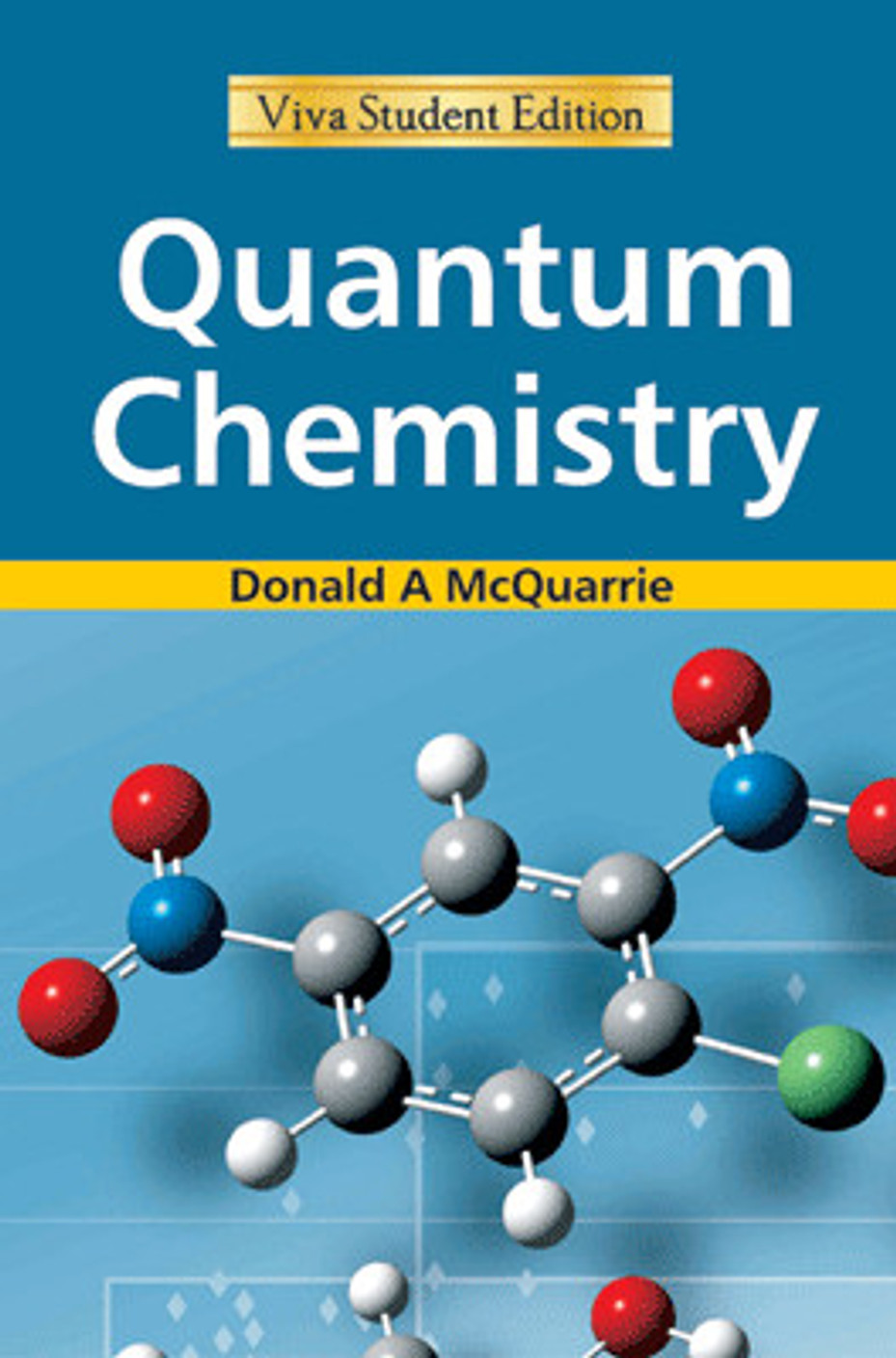'This new edition (2008) expands on the excellent first edition by McQuarrie. This is a very clear and well-organized presentation and development of quantum chemistry of atoms and molecules.Strongly suggested for acquisition. Highly recommended.' - Choice: Current Reviews for Academic Libraries 'McQuarrie's Quantum Chemistry 2e offers students a superb introduction to quantum mechanics and its application to chemistry. The second edition is loaded with clear and methodical explanations, and a broad array of worthwhile problems.
The new material on electronic structure theory and computation is a great addition and really helps students see what going on inside the 'black box' of modern molecular modeling tools.' -Alan Shusterman, Reed College 'McQuarrie's 2nd edition Quantum Chemistry is outstanding. Students will find that he has integrated the right level of math, physics, chemistry and problems into a single upper undergraduate/graduate level quantum and spectroscopy textbook.'
Aether Clothing
Quantum Chemistry, by Donald McQuarrie. Quantum Chemistry Donald A. McQuarrie University of. Quantum Chemistry into a keenly anticipated second edition.

Madura, Duquesne University Still a best-selling text after a remarkable twenty-four years in print, Don McQuarrie has updated his landmark Quantum Chemistry into a keenly anticipated second edition. Perhaps the biggest change in the years since the first edition appeared is the proliferation of computational chemistry programs that are available to calculate molecular properties.
McQuarrie has presented step-by-step SCF calculations of a helium atom in Chapter 9 and a hydrogen molecule in Chapter 10, in addition to including an entire chapter on the Hartree-Fock method and post-Hartree-Fock methods for the calculation of molecular properties. Most molecular calculations nowadays use Gaussian orbitals, and they are introduced here along with the common notation such as HF / STO-6G and HF / 6-31G. to describe the types of calculations involving Gaussian orbitals. The final sections discuss configuration interaction, coupled-cluster theory and density functional theory, at least semi-quantitatively, so that the reader can be aware of the computational methods that are being used currently. Terminology such as CISD, CCSD, and BLPY / 6-31G. is introduced and hands-on molecular calculations for all these methods using computational chemistry programs such as Gaussian and WebMo for a variety of molecules is presented.
The book also uses problems to encourage the use of an invaluable National Institute of Science and Technology ( NIST ) website that lists experimental data and the results of various ab initio calculations for hundreds of molecules. Other changes include the discussion of molecular spectroscopy throughout the chapters on the harmonic oscillator and the rigid-rotator. The hydrogen atom, along with its electronic spectroscopy, is discussed in a separate chapter. And in the following chapter, which is devoted entirely to multielectron atoms, a website for Hartree-Fock atomic orbitals is introduced. After learning the structure of these atomic orbitals, they are used to calculate atomic properties for multielectron atoms. The new edition also includes a series of short interchapters called MathChapters placed throughout the book to help students focus on the physical principles being explained rather than struggling with the underlying mathematics.
As with the first edition, the book assumes a prerequisite of one year of calculus with no required knowledge of diff erential equations. Each chapter includes a broad range of problems and exercises. Ancillaries. A detailed by Helen Leung and Mark Marshall of Amherst College, is also available. Art from the book is available for download into lecture slides by adopting professors.
- The biggest change in the years since the first edition is the proliferation of computational chemistry programs that calculate molecular properties.
- Quantum Chemistry 2nd Edition. Donald McQuarrie's name is. I really like the fact that my instructor decided to use quantum chemistry written by mcquarrie for.
About the Author: As the author of landmark chemistry books and textbooks, Donald McQuarrie's name is synonymous with excellence in chemical education. From his classic text on Statistical Mechanics to his recent quantum-first tour de force on Phys ical Chemistry, McQuarrie's best selling textbooks are highly acclaimed by the chemistry community. McQ uarrie received his PhD from the University of Oregon, and is Professor Emeritus from the Department of Chemistry at the University of California, Davis. He makes his home at The Sea Ranch in California with his wife Carole, where he continues to write.
Translated into Korean. Print Book ISBN 978-1-891389-50-4, 746 pages, Copyright 2007, Casebound List Price US$116 Publisher's Discount Price US$98.60 eBook eISBN 978-1-891389-26-9, 746 pages, Copyright 2007 List Price US$68 to own; US$48 to lease.